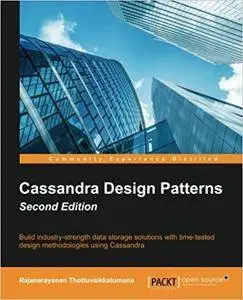Cassandra Design Patterns - Second Edition
by Rajanarayanan Thottuvaikkatumana
English | 2015 | ISBN: 178528570X | 165 Pages | True PDF | 3.8 MB
by Rajanarayanan Thottuvaikkatumana
English | 2015 | ISBN: 178528570X | 165 Pages | True PDF | 3.8 MB
This book is intended for big data developers who are familiar with the basics of Cassandra and wish to understand and utilize Cassandra design patterns to develop real-world big data solutions. Prior knowledge of RDBMS solutions is assumed.
There are many NoSQL data stores used by big data applications. Cassandra is one of the most widely used NoSQL data stores that is frequently used by a huge number of heavy duty Internet-scale applications. Unlike the RDBMS world, the NoSQL landscape is very diverse and there is no one way to model data stores. This mandates the need to have good solutions to commonly seen data store design problems. Cassandra addresses such common problems simply.
If you are new to Cassandra but well-versed in RDBMS modeling and design, then it is natural to model data in the same way in Cassandra, resulting in poorly performing applications and losing the real purpose of Cassandra. If you want to learn to make the most of Cassandra, this book is for you.
This book starts with strategies to integrate Cassandra with other legacy data stores and progresses to the ways in which a migration from RDBMS to Cassandra can be accomplished. The journey continues with ideas to migrate data from cache solutions to Cassandra. With this, the stage is set and the book moves on to some of the most commonly seen problems in applications when dealing with consistency, availability, and partition tolerance guarantees.
Cassandra is exceptionally good at dealing with temporal data and patterns such as the time-series pattern and log pattern, which are covered next. Many NoSQL data stores fail miserably when a huge amount of data is read for analytical purposes, but Cassandra is different in this regard. Keeping analytical needs in mind, you'll walk through different and interesting design patterns.
No theoretical discussions are complete without a good set of use cases to which the knowledge gained can be applied, so the book concludes with a set of use cases you can apply the patterns you've learned.



